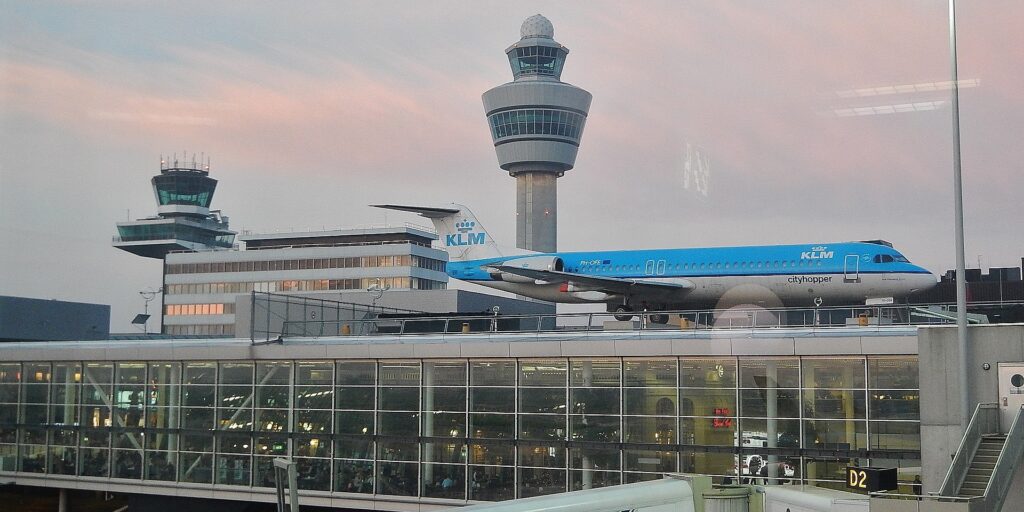While most of us complain about modern airport delays and overpriced coffee, imagine the patience required by early aviators who had to build runways before they could take off literally.
The aviation industry has come a long way since those pioneering days, yet remarkably, several airports from aviation’s infancy continue to welcome passengers today.

Oldest Airports in the World
These 10 oldest airports in the world have witnessed the entire evolution of flight, from fabric-winged biplanes to supersonic jets, demonstrating that some things truly do improve with age!
10. Albany International Airport (ALB) – Opened 1928

Albany International Airport (ALB) stands as a testament to American aviation’s growth during the late 1920s.
Originally established to serve New York’s capital region, the airport began operations during the golden age of aviation when commercial flying was still considered a luxury for the wealthy and adventurous.
The facility has undergone numerous transformations throughout its nearly century-long history. Major renovations occurred in 1962, modernising the terminal to accommodate the jet age’s arrival.
Another significant expansion in 1979 doubled the airport’s capacity, while the 1998 renovation brought contemporary amenities and improved passenger flow.
The most recent major construction project in 2000 included a dedicated terminal for Southwest Airlines (WN), reflecting the growing influence of low-cost carriers in American aviation.
Today, Albany International Airport (ALB) processes approximately 2.7 million passengers annually, serving as a crucial gateway to upstate New York and connecting the region to major domestic and international destinations.
9. Minneapolis/Saint Paul International Airport (MSP) – Opened 1920
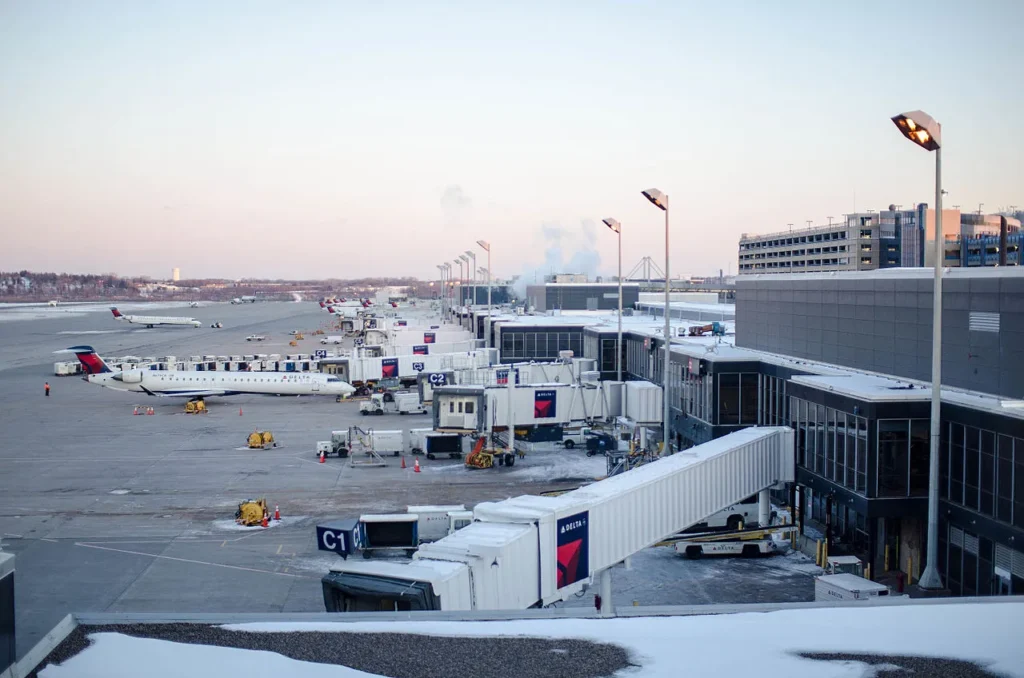
Minneapolis/Saint Paul International Airport (MSP) began its journey as Speedway Field in 1920, during an era when aviation was transitioning from military to civilian use following World War I. The facility’s evolution mirrors the broader development of American aviation infrastructure.
In 1923, the airport was renamed Wold-Chamberlain Field, honouring two local aviation pioneers. This name persisted for 25 years until 1948, when it became Minneapolis-St. Paul International Airport (MSP), reflecting its growing importance as a regional hub.
The modern MSP features two terminals and four runways, serving as a major hub for Delta Air Lines (DL) and its SkyTeam alliance partners.
The airport connects Minneapolis to destinations throughout the Americas while maintaining crucial long-haul routes to London Heathrow (LHR), Amsterdam (AMS), and Seoul Incheon (ICN). This international connectivity has established MSP as one of America’s most important inland aviation hubs.
8. Sydney Airport (SYD) – Opened 1920
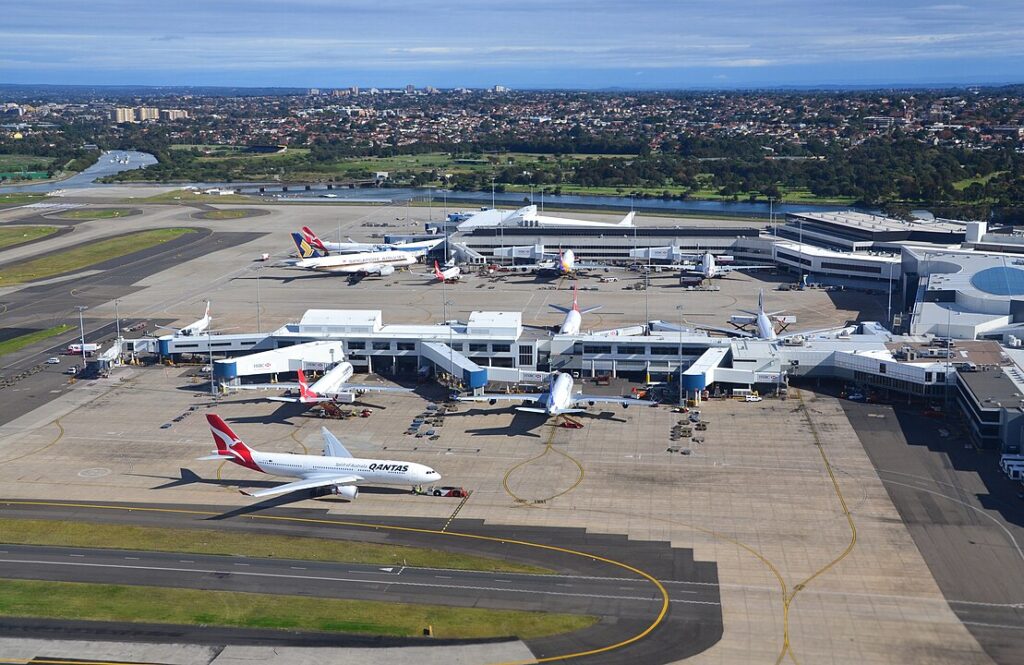
Sydney Airport (SYD) holds the distinction of being both the eighth-oldest continuously operating airport worldwide and the oldest in the Southern Hemisphere.
Its establishment in 1920 marked Australia’s entry into the modern aviation age, positioning Sydney as a crucial link between Australia and the world.
The airport’s development accelerated throughout the 1930s with the construction of its first gravel runways in 1933.
Three years later, the facility was renamed Sydney Kingsford Smith Airport (SYD), honouring Australia’s most celebrated aviation pioneer, Sir Charles Kingsford Smith. By 1949, the airport boasted 3 runways and opened its first dedicated international terminal, signalling Australia’s growing importance in global aviation.
The jet age arrived at Sydney Airport (SYD) in 1969 with Qantas’ introduction of Boeing 707 services.
Today, Sydney Airport (SYD) processes approximately 40 million passengers annually, making it Australia’s busiest aviation facility and serving as the primary hub for Qantas (QF), Jetstar (JQ), and Virgin Australia (VA).
7. Paris-Le Bourget Airport (LBG) – Opened 1919

Paris-Le Bourget Airport (LBG) opened in 1919 as Paris’s sole aviation facility, serving the French capital until Paris Orly Airport’s opening in 1932.
Despite its eventual displacement as Paris’s primary airport, Le Bourget earned its place in aviation history through several milestones.
The airport’s most famous moment came in May 1927 when Charles Lindbergh completed his historic solo transatlantic flight, landing at Le Bourget after his 33.5-hour journey from New York. Commercial services quickly expanded following this publicity, establishing Le Bourget as Europe’s premier aviation hub.
However, by 1952, capacity constraints forced Air France (AF) to relocate its entire operation to Orly Airport (ORY). Rather than fade into obscurity, Le Bourget reinvented itself as a specialised facility. Today, it hosts the prestigious Paris Air Show every two years!
6. Amsterdam Schiphol Airport (AMS) – Opened 1916
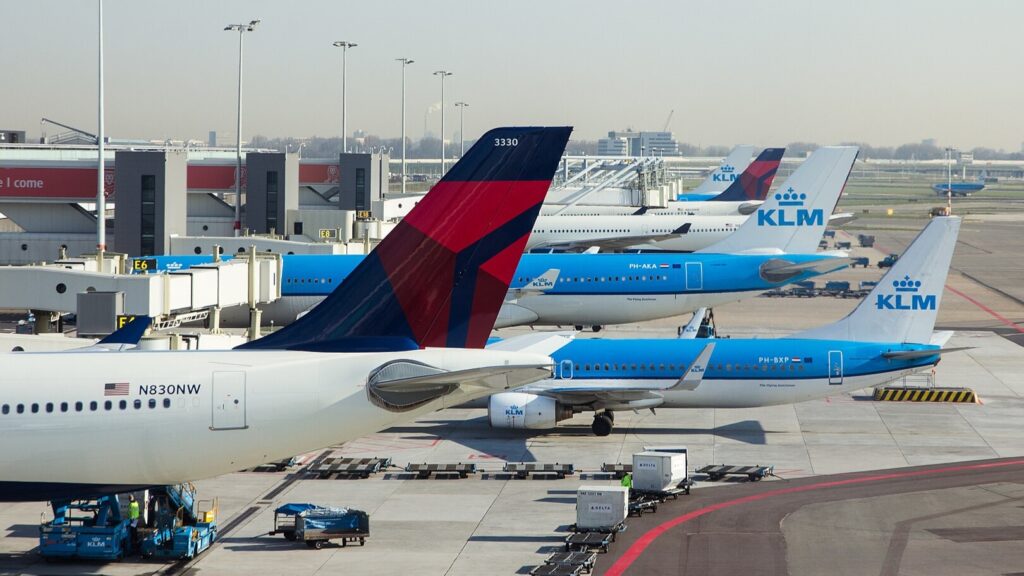
Amsterdam Schiphol Airport (AMS) began operations in September 1916 as a military airbase, reflecting aviation’s military origins during World War I.
The transition to civilian operations occurred immediately after the war’s end, positioning Schiphol as one of Europe’s earliest commercial aviation facilities.
The airport faced significant challenges during World War II when German forces partially destroyed its infrastructure. However, the Dutch commitment to rebuilding and expanding Schiphol in the post-war era transformed it into one of Europe’s most important aviation hubs.
The airport’s unique design features one continuous terminal building divided into 3 distinct sections, maximising operational efficiency.
Schiphol’s impressive infrastructure includes 6 runways, enabling it to handle the world’s largest aircraft while maintaining exceptional on-time performance. In 2023, the airport processed nearly 62 million international passengers, ranking as the world’s third-busiest airport by international passenger traffic.
5. Rome Ciampino Airport (CIA) – Opened 1916
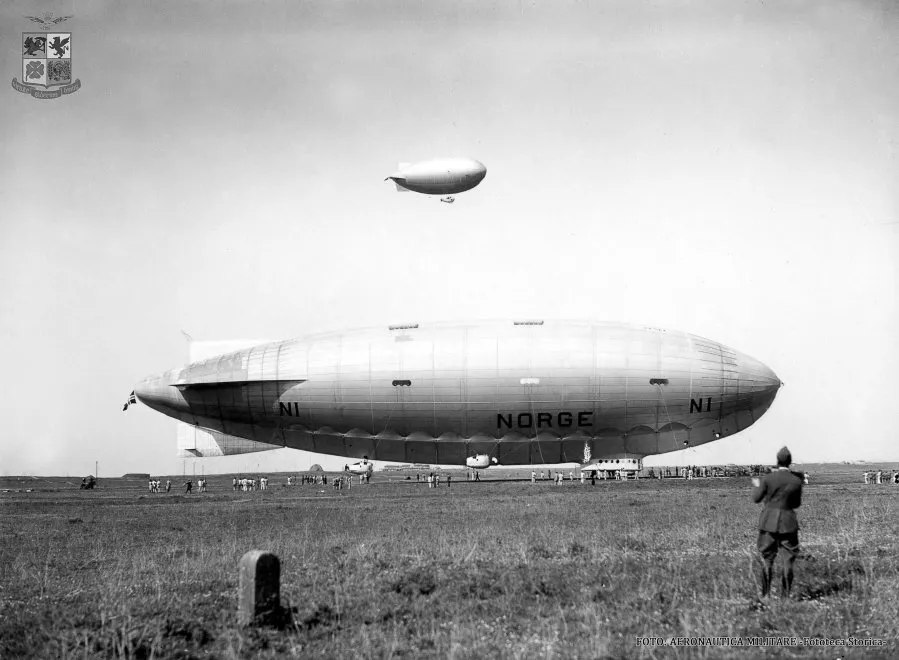
Rome Ciampino Airport (CIA) opened in 1916, serving as the Italian capital’s primary aviation gateway for nearly half a century. The airport played a crucial role in establishing Italy’s position in international aviation during the interwar period and beyond.
Ciampino maintained its status as Rome’s main airport until 1960, when the opening of Leonardo da Vinci-Fiumicino Airport (FCO) shifted most commercial operations to the newer, larger facility. This transition marked a significant change in Ciampino’s role within Italy’s aviation network.
For more than 4 decades following this transition, Rome Ciampino Airport (CIA) operated primarily as a facility for charter flights and VIP services. However, 2007 marked another transformation when low-cost carriers discovered the airport’s potential.
The facility now features one terminal building with 16 departure gates, connecting Rome to destinations throughout Europe and serving as an important alternative to the larger Fiumicino Airport (FCO).
4. Bremen Airport (BRE) – Opened 1913

Bremen Airport (BRE) opened in 1913, representing one of Germany’s first aviation facilities designed specifically for aircraft rather than airships, which were prevalent in German aviation at the time. This forward-thinking approach positioned Bremen as a pioneer in fixed-wing aviation infrastructure.
World War I temporarily converted the airport to military use, but commercial operations resumed in 1920 when KLM (KL) launched services connecting Bremen (BRE) to Amsterdam Schiphol Airport (AMS). This route represented one of Europe’s earliest international commercial aviation services.
The 1930s brought significant expansion to Bremen Airport (BRE), but World War II again interrupted civilian operations. Post-war recovery included Lufthansa’s arrival in the 1950s, establishing Bremen as an important node in Germany’s rebuilding aviation network.
Today, Bremen Airport (BRE) serves more than 1.8 million passengers annually, connecting northern Germany to business centres and vacation destinations throughout Europe.
3. Bucharest Băneasa Aurel Vlaicu International Airport (BBU) – Opened 1912
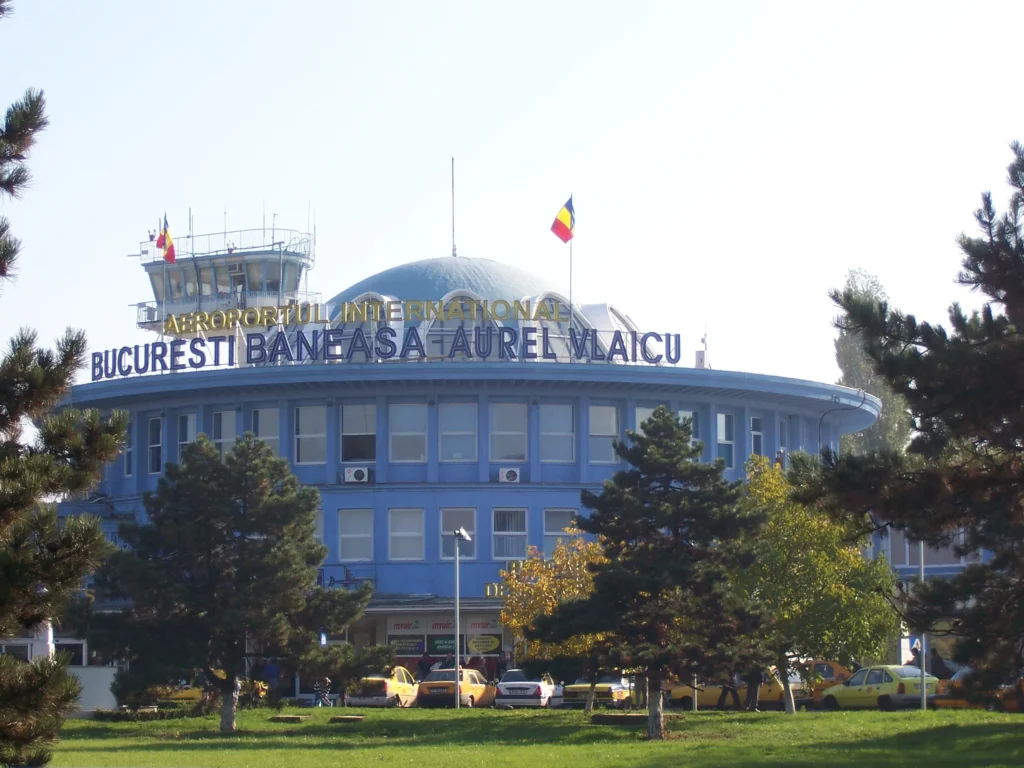
George Valentin Bibescu established one of Romania’s first flight schools in 1912, creating what would become Bucharest Băneasa Aurel Vlaicu International Airport (BBU). This facility represents Eastern Europe’s oldest continuously operating airport and reflects the region’s early adoption of aviation technology.
For decades, Băneasa served as TAROM’s domestic hub while international operations were centred at Henri Coandă International Airport (OTP).
In the early 2000s, TAROM (RO) consolidated operations at the larger facility, but Băneasa remained Romania’s second-busiest airport, particularly popular with low-cost carriers.
However, by 2012, the facilities were deemed inadequate for Romania’s growing aviation market, leading to their conversion to a business-only airport serving private and charter flights.
2. Hamburg Airport (HAM) – Opened 1911
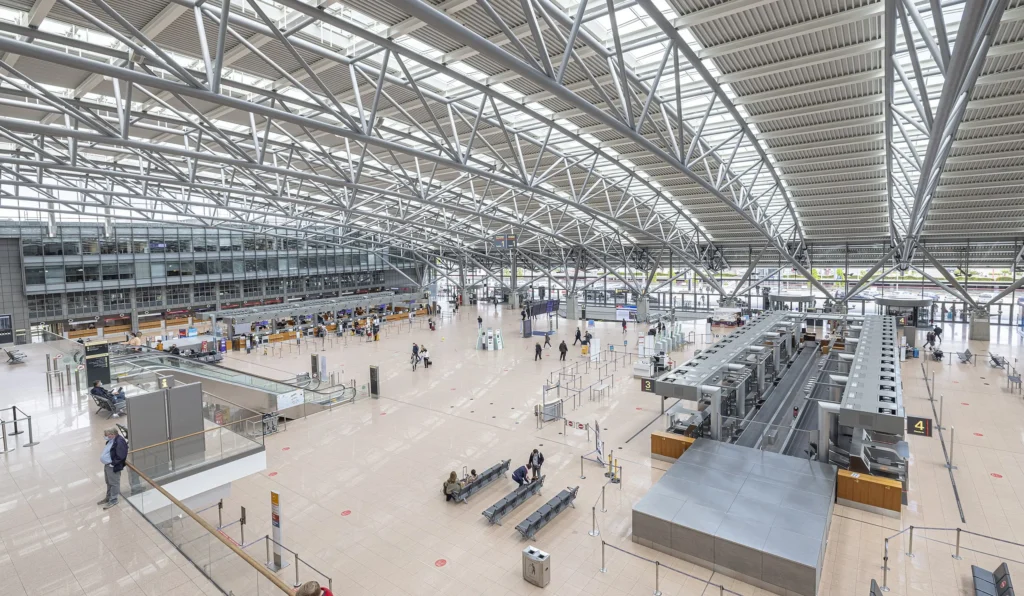
Hamburg Airport (HAM) opened in 1911, making it the world’s second-oldest continuously operated airport. Its longevity reflects both German engineering excellence and the city’s strategic importance as a Northern European commercial centre.
Between 2001 and 2009, Hamburg Airport (HAM) underwent a $370 million renovation project that transformed it into a modern aviation facility.
The renovation included 2 new terminal buildings capable of accommodating large aircraft, including the Airbus A380, and integrated the airport with Hamburg’s metropolitan transit system, improving regional connectivity.
Today, Hamburg Airport (HAM) connects to more than 125 destinations throughout Europe, with long-haul services to Dubai and Doha operated by Emirates (EK) and Qatar Airways (QR), respectively.
The airport processed more than 13 million passengers in recent years, though this remains below its pre-pandemic peak of 17 million, reflecting the industry’s ongoing recovery efforts.
1. College Park Airport (CGS) – Opened 1909

College Park Airport (CGS) in Maryland holds the prestigious title of the world’s oldest continuously operated airport, opening in August 1909. The facility was specifically chosen by Wilbur Wright as the location to train military officers for the U.S. Army, establishing its place in aviation history from the very beginning.
Commercial air services began at College Park in December 1911, making it one of the first airports to transition from military training to civilian operations. The airport’s historical significance has earned it the nickname “cradle of aviation,” reflecting its role in American aviation’s foundational years.
However, the September 11, 2001, terrorist attacks significantly impacted College Park Airport’s operations. Due to its proximity to Washington, D.C., the TSA implemented strict operational limitations for national security reasons.
These restrictions ended Tailwind Airlines’ ambitious plans to launch commercial services between College Park and Manhattan’s Skyport Marina using Cessna Grand Caravan aircraft.

Bottom Line
These 10 airports represent more than just transportation hubs; they’re living museums of aviation history, having witnessed humanity’s greatest adventure unfold overhead.
From College Park’s Wright brothers connection to Schiphol’s modern marvel of efficiency, each facility tells a unique story of adaptation, innovation, and perseverance.
While passengers today might take for granted the miracle of flight, these airports serve as reminders that aviation’s journey from dream to routine has been nothing short of extraordinary.
The next time you’re stuck in a departure lounge, remember you might be sitting where aviation history was made, though the coffee prices probably weren’t any better back then either!
Stay tuned with us. Further, follow us on social media for the latest updates.
Join us on Telegram Group for the Latest Aviation Updates. Subsequently, follow us on Google News

